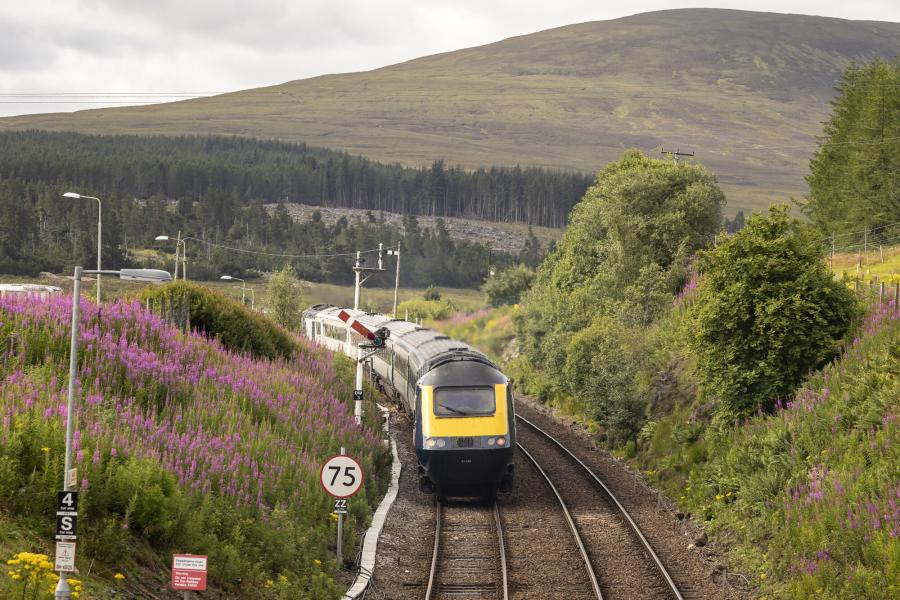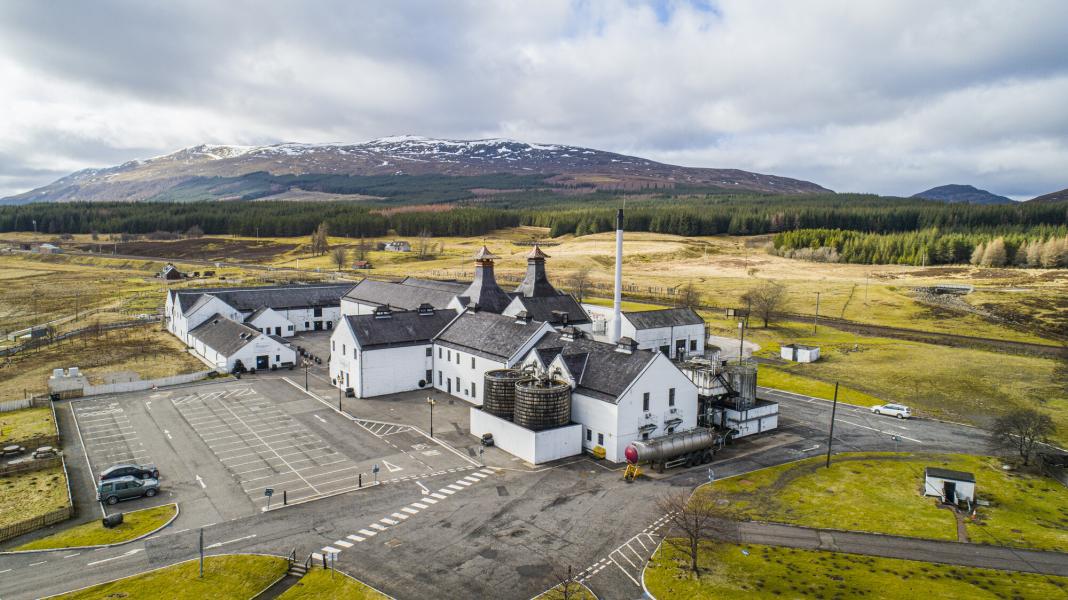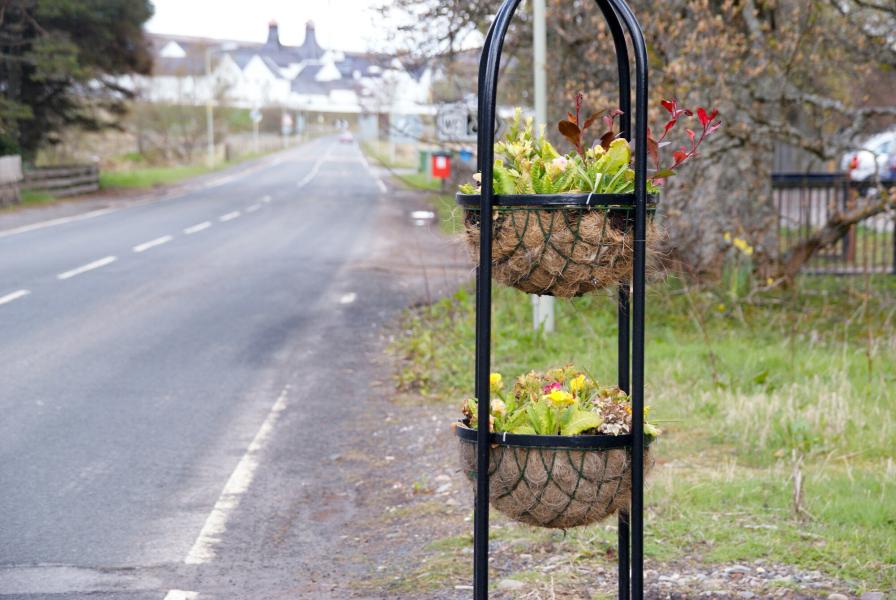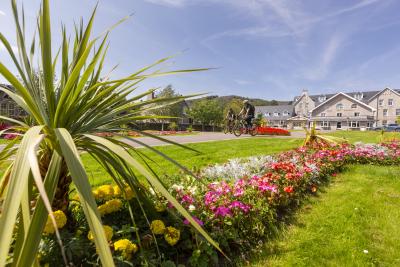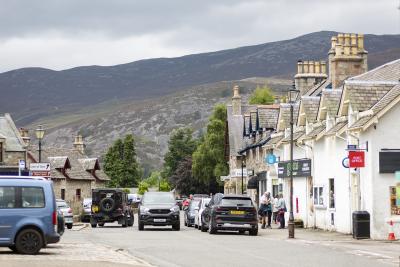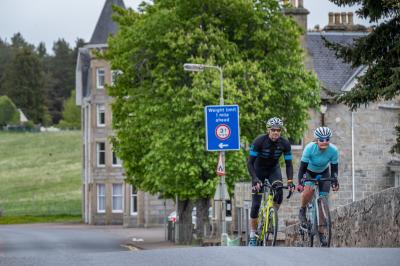Dalwhinnie
Dail Chuinnidh
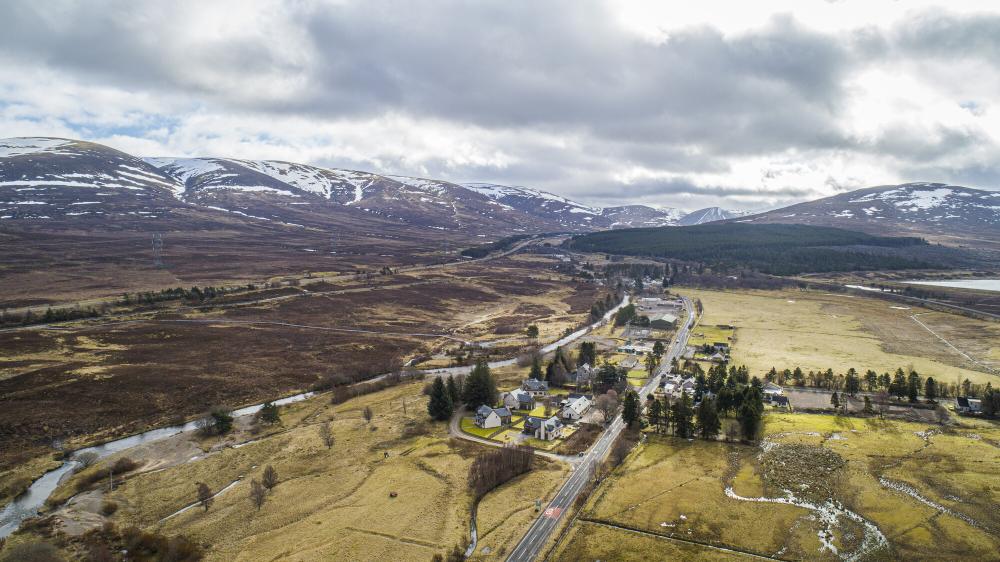
Alert
The mountain village of Dalwhinnie is located on the western edge of the Cairngorms National Park at the head of Glen Truim. Striking mountain scenes frame the village in every direction.
In Gaelic, Dalwhinnie translates to ‘meeting place’- a fitting translation for a small yet active community. The name, however, was originally selected to reflect its accessibility. Once a cattle road crossing, Dalwhinnie was the resting point for drovers fueling up before the next, often difficult, stage of their journey: the Pass of Drumochter, a mountain path lying to the south of the village.
Thankfully, the excellent transport links available today make Dalwhinnie and the surrounding area more reachable. The village sits just off the A9, a major road linking the central regions of Scotland to the Highlands. Dalwhinnie also has its own railway station and is well served by local bus routes.
Several cycle routes create options for active travel around Dalwhinnie, helping to lower local emissions. These include the National Cycle Route 7, which links Sunderland to Inverness, and local tracks leading to remote spots such as the nearby Loch Ericht.
From the village, 15 Munros can be accessed by bike or foot. These include Ben Alder (1,148m), Meall Chuaich (951m), and Geal-Chàrn (1,132m).
With an elevation of 351m, Dalwhinnie is the highest village in the Highlands. It’s also one of the coldest: a mean annual temperature of 6.6°C makes it popular among mountaineering enthusiasts. Unsurprisingly, Dalwhinnie Distillery, a cornerstone of the community and the single malt whisky industry, is also the UK’s highest distillery.
The mountain village of Dalwhinnie is located on the western edge of the Cairngorms National Park at the head of Glen Truim. Striking mountain scenes frame the village in every direction.
In Gaelic, Dalwhinnie translates to ‘meeting place’- a fitting translation for a small yet active community. The name, however, was originally selected to reflect its accessibility. Once a cattle road crossing, Dalwhinnie was the resting point for drovers fueling up before the next, often difficult, stage of their journey: the Pass of Drumochter, a mountain path lying to the south of the village.
Thankfully, the excellent transport links available today make Dalwhinnie and the surrounding area more reachable. The village sits just off the A9, a major road linking the central regions of Scotland to the Highlands. Dalwhinnie also has its own railway station and is well served by local bus routes.
Several cycle routes create options for active travel around Dalwhinnie, helping to lower local emissions. These include the National Cycle Route 7, which links Sunderland to Inverness, and local tracks leading to remote spots such as the nearby Loch Ericht.
From the village, 15 Munros can be accessed by bike or foot. These include Ben Alder (1,148m), Meall Chuaich (951m), and Geal-Chàrn (1,132m).
With an elevation of 351m, Dalwhinnie is the highest village in the Highlands. It’s also one of the coldest: a mean annual temperature of 6.6°C makes it popular among mountaineering enthusiasts. Unsurprisingly, Dalwhinnie Distillery, a cornerstone of the community and the single malt whisky industry, is also the UK’s highest distillery.
Alert
Sources
Dalwhinnie
key
facts


Location

Learn more about Dalwhinnie
Find out more information for community members and visitors alike.
Relevant alerts
-
The railway level crossing at Dalwhinnie – at the walkers car park NN 633 846 – has been closed by Network Rail. An alternative point to cross the railway is via the underpass to the south at the Ben Alder cottages (NN 634 841). More information.
- Dalwhinnie waymarked walks:
- the Loch Ericht Walk loop is no longer possible due to the level crossing closure
- to reach the start of the Forest Walk and Coachan Wood Viewpoint the above diversion to the railway underpass is required
- Dalwhinnie waymarked walks:





